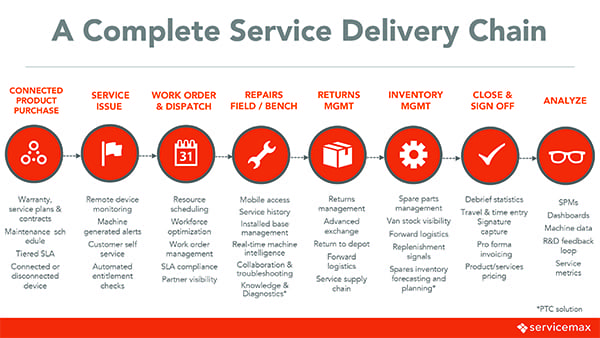Utilities and power plant equipment providers know that maximizing the value of their assets includes keeping them maintained and online. Minimizing downtime is critical, certainly when it comes to keeping the lights on in a generator’s service territory.
Dozens of groups offer software solutions for equipment maintenance, though not all are part of a system that not only tracks equipment but also compiles data, enabling the scheduling of service calls and faster response times when problems arise. Operations and maintenance (O&M) managers in the energy industry, particularly those at power plants and utilities, in recent years have increasingly turned to digital solutions to help with equipment inspections, maintenance, safety issues, regulatory compliance, and other services at their facilities and in the field.
“We need to move away from the ‘break-fix’ model, move away from being reactive and be more proactive,” said Lubor Ptacek, vice president of product marketing at ServiceMax, a Pleasanton, California-based global field service company under the GE Digital umbrella that uses cloud-based software to help companies connect workforce and management with inspection data (Figure 1). Ptacek, in a recent interview with POWER, said, “It’s really important to have a complete software solution for service departments, including service technicians and engineers who travel to fix the problem.”
Ptacek said O&M managers are looking not only to optimize the performance of their assets, but also to “optimize costs”—in other words, ensure budgets aren’t busted by surprises when it comes to maintenance operations. That’s of particular importance to power plant operators and other generators, such as wind and solar farms, who know that downtime affects the reliable production of electricity and that taking a unit or units offline has a ripple effect up and down the power grid. Part of controlling costs involves a regular maintenance schedule for equipment, in order to avoid expensive repairs, unplanned replacements, and unexpected outages.
Scott Bolick, senior vice president-power digital product management for GE, who works from GE Digital’s office in San Ramon, California, in an interview with POWER said his group doesn’t approach its asset performance management strategy as “selling to customers,” but rather as “creating solutions with partners.”
“In every one of our engagements, we essentially create what we call a value story,” said Bolick. “This is the value we think we can create; jointly build the business case. In that conversation, we talk about future-proofing the plant. A big concept of the digital power plant is putting the software in place to be flexible to the changing dynamics of the market, seeing the value of having flexible digital solutions in place.”
Ptacek agreed. “It’s important to have a software solution that works for all departments” across a power plant, said Ptacek. “That’s really true for any industry. We’re collecting data, but it’s more than that. It’s about the action taken with that data,” knowing that the sooner issues are found, the lower the repair costs, and that preventive, proactive maintenance almost always is more cost-effective than fixing a problem after the fact.
Bolick, one of the principals behind GE Digital’s asset performance management strategy, told POWER that “as we went through this process over the past couple of years, what we realized is that a lot of power and generation utilities were looking to upgrade their M&D [monitoring and diagnostics] capabilities.”
Spotting potential problems before they arise helps avoid those “true emergencies, when all bets are off,” said Ptacek, who talked about “condition-based maintenance,” where under certain conditions maintenance requests are sent automatically to field technicians, all part of being proactive.
“That’s really all about figuring out what needs to happen before you put a guy in a truck and send him there,” for either maintenance or repairs, said Ptacek. “You need to know, ‘What is required at the site? What parts are needed?’ All of that goes into the automated, algorithmic work order. It looks at who is available [to perform the work], then the work order comes over a mobile device to the technician. It enables the tech to get there on time, and the work to be done on budget. Our products offer a mobile application, on any mobile device, with all the information needed to get the job done.”
Both Ptacek and Bolick said new O&M models are challenging the traditional ways of delivering service, as companies leverage technology to improve asset performance management.
“It’s an outcome-based business,” said Ptacek. “We’re dealing with prescribed service plans, with compliance, and dealing with the need to improve the customer experience.” ■
—Darrell Proctor is a POWER associate editor.











